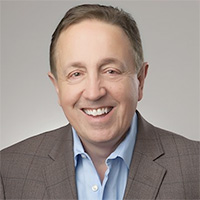The lighting industry’s diversity problem
By Paul Pompeo
About 10 years ago we had a panel column in LD+A titled “Women in Lighting.” As I worked to recruit my panelists, one senior professional at a major lighting manufacturer expressed excitement about being on the panel, but later withdrew her name due to concerns about whether it would negatively affect her role with her company.
With the events of this year, it seemed timely to reprise the earlier concept, but this time focus on the viewpoints and experiences of Black lighting professionals. With this column as well, at least three respected Black lighting professionals were reticent to take part—I would imagine out of fear of backlash or a negative effect on their career. When I saw that happening in 2020, it reinforced that this topic merits the industry’s attention.
It’s been said that it’s hard to judge someone’s experience unless you’ve walked in their shoes. I’ve learned something during our dialogue with each panelist here and I hope you have a similar experience.
This panel represents a cross section of lighting design, manufacturing, distribution, rep agency and ESCO professionals, consisting of Nathalie Faubert (senior associate at Cline Bettridge Bernstein Lighting Design); Laura Dandridge Gaines (specification sales agent, Performance Lighting Systems); Jean Jacques (executive vice president, SDA Lighting); Travis Jones (president and CEO, Jones Consulting Services); Chris Primous (vice president of OEM sales and industry relations, Maxlite); and Turquoise L. Shaw (president, Blue Lighting Consultants).
For our first question, a definition might be necessary—at least it was for me. Psychologist Derald Wing Sue defines “microaggressions” as “…brief, everyday exchanges that send denigrating messages to certain individuals because of their group membership [i.e., race or gender, for example].”
PAUL POMPEO: Throughout your career, have you experienced any “microaggressions” that made you feel apart, different or “other?” If so, how did you handle these situations?
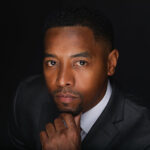 CHRIS PRIMOUS: Sure. In my case, especially since I do a lot of speaking and training sessions, it typically took the form of someone commenting that I was very “articulate” or that I “speak very well.” My approach in response to such statements was typically to let it go and not feel the need to call the person out. In some social situations, I may have turned it into a joke and pushed the same comment back on them, but most of the time I wouldn’t call the person out since these are the kinds of things I have unfortunately come to expect when working in mixed-culture environments.
CHRIS PRIMOUS: Sure. In my case, especially since I do a lot of speaking and training sessions, it typically took the form of someone commenting that I was very “articulate” or that I “speak very well.” My approach in response to such statements was typically to let it go and not feel the need to call the person out. In some social situations, I may have turned it into a joke and pushed the same comment back on them, but most of the time I wouldn’t call the person out since these are the kinds of things I have unfortunately come to expect when working in mixed-culture environments.
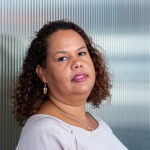 NATHALIE FAUBERT: At the beginning of my career I worked on a project which required doing site meetings and visits. At those meetings, I was the only woman, the only person of color and the youngest person. One of the contractors was very intimidating and would bully me. Being so young and lacking confidence, I just wouldn’t react. One day a person on the team took me aside and told me that I needed to react by “yelling back” [if I wanted to] get some respect. I appreciated the person telling me, but was shocked that I needed to “yell back” to be heard.
NATHALIE FAUBERT: At the beginning of my career I worked on a project which required doing site meetings and visits. At those meetings, I was the only woman, the only person of color and the youngest person. One of the contractors was very intimidating and would bully me. Being so young and lacking confidence, I just wouldn’t react. One day a person on the team took me aside and told me that I needed to react by “yelling back” [if I wanted to] get some respect. I appreciated the person telling me, but was shocked that I needed to “yell back” to be heard.
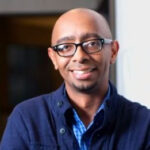 JEAN JACQUES: I am sure I’m not the only one having to learn new terminology in our current climate—microaggression, ally, BIPOC [black, indigenous and people of color]—to name a few. To put it plainly, racism surrounds us. I don’t have the luxury of ignoring it, whereas others might, so the answer to your first question is yes—absolutely.
JEAN JACQUES: I am sure I’m not the only one having to learn new terminology in our current climate—microaggression, ally, BIPOC [black, indigenous and people of color]—to name a few. To put it plainly, racism surrounds us. I don’t have the luxury of ignoring it, whereas others might, so the answer to your first question is yes—absolutely.
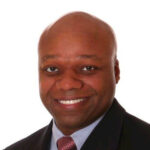 TRAVIS JONES: Yes. I have been told Black jokes over the phone from callers who were unaware of my race. I simply moved the conversation on to different topics.
TRAVIS JONES: Yes. I have been told Black jokes over the phone from callers who were unaware of my race. I simply moved the conversation on to different topics.
POMPEO: Have there been times when you were ready for advancement, but felt that it did not materialize because of the color of your skin?
JACQUES: I’ve been fortunate not to have experienced that. When I first joined a lighting agency as an administrative assistant 25 years ago, I unknowingly stumbled into my home for the next 17 years. There I was appreciated, respected and given every opportunity to build a path to ownership. In the eight years since [that agency] was acquired, it’s been a wonderful continuation of that path.
JONES: Yes. I have twice been told privately by senior management members further advancement was not possible because of my race.
PRIMOUS: If this has been a factor, I am not aware it has been.
POMPEO: What role can mentors play for minority lighting professionals?
FAUBERT: One: prove to the younger generation that they will be accepted and respected in the industry. Two: schedule one-on-one meetings with mentees to discuss their path and answer any questions [that] they may be too shy to ask in public. Three: introduce them to their peers by tagging along with them to events.
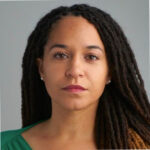 LAUREN DANDRIDGE GAINES: Mentoring is everything. I wouldn’t have moved forward in my career without mentors being receptive to an unknown young woman reaching out for a conversation. I’ve always felt very connected to my mentors and still feel a responsibility to not just do well, but to succeed. Strangely enough, when I started in architectural lighting, I worked for two women who were absolute powerhouses, but I struggled to see any Black people anywhere.
LAUREN DANDRIDGE GAINES: Mentoring is everything. I wouldn’t have moved forward in my career without mentors being receptive to an unknown young woman reaching out for a conversation. I’ve always felt very connected to my mentors and still feel a responsibility to not just do well, but to succeed. Strangely enough, when I started in architectural lighting, I worked for two women who were absolute powerhouses, but I struggled to see any Black people anywhere.
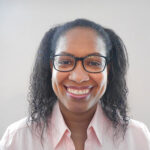 TURQUOISE SHAW: Mentors are very important. My current mentor is Asian. We’re both female and minorities, so it’s easy to talk with her and we’re able to chat about similar experiences. We speak once a month and I truly look forward to our conversations.
TURQUOISE SHAW: Mentors are very important. My current mentor is Asian. We’re both female and minorities, so it’s easy to talk with her and we’re able to chat about similar experiences. We speak once a month and I truly look forward to our conversations.
JACQUES: Mentorship is critical in my opinion, but not only in terms of professional mentorship. I believe we need to expand the mentorship conversation even further. I would propose we flip the equation altogether and look at the issue from the other end. Let’s engage the youth and plant the seed in middle school and at the high-school level. In part this conversation has to do with access and availability. In psychology the concept of availability basically suggests that individuals evaluate the probability of an event occurring based on how easy it is to imagine. How can you imagine yourself as a future lighting designer if you don’t know the field even exists and instead lives outside of your reality?
POMPEO: What one thing can the industry do differently to recruit, support and train employees of color?
JONES: Hiring attributes such as talent, work ethic, teamwork, creativity and intelligence can be found in every race, gender and sexuality. If the goal is to increase minority participation in the lighting industry, earlier intervention is required for those who might not reach their potential due to difficult circumstances beyond their control.
SHAW: When I was working for an employer, it would have been beneficial to be provided someone within the company—if possible, someone of color—to mentor me and help transition into the company culture.
FAUBERT: This question goes beyond the lighting industry. It is for all design fields and beyond. Students from high school or earlier grades should be exposed to the various fields instead of them trying figure it out with little guidance. To put it in perspective, I went to university for my bachelor’s degree in interior design in Philadelphia. There, architecture and interior design students had multiple classes together and were in the same building. If I am not mistaken, between both programs, we were four Black students out of a class of 50-plus, and none of us were from Philly [laughs]. A conclusion would be that the school of architecture did not recruit in their own backyard.
PRIMOUS: Certainly, targeting HBCUs [historically black colleges and universities] for new college graduates or internships can help. But also, many companies don’t even realize when they place these “About Us” or “Meet the Leadership Team” sections on their websites that show photos of the executives, how important it is for their company’s diversity to be visible to potential applicants. These types of things have a tremendous impact on whether a company looks attractive and welcoming as a place to embark upon a career for a potential employee.
DANDRIDGE: The answer is simple in recognition, but more difficult in practice. We can reach out to a younger, broader audience. In order to make a change, we have to recognize that improvements can be made. As an industry, we should be encouraging participation from all students in an aggressive manner from all areas of built-environment educational fields—not just waiting for the architects who decide which lighting they like better or the electrical engineering students who have a good eye.
POMPEO: There seem to be very few Black female sales/sales management professionals in lighting—why might that be the case?
DANDRIDGE: Honestly, there are so few Black people in lighting, it just makes demographic sense for there to be so few in the sales division of our industry. And, unfortunately, I don’t know many women like me, yet that was also the case when I was an architectural lighting designer, and the case when I was a theatrical designer. So, while I can’t answer the exact reason as to why there are so few black women in sales, what I can speak to are the concerns that I have as a Black woman in sales. Like most salespeople, I want to win. I want to be great. I want to achieve the next level, get the sale and have the most impact possible. There is a certain level of aggressiveness that comes with that mindset.
PRIMOUS: Actually, going back to my college days, there were very few Black people in engineering, and among those few, even fewer women. So, much of it starts very early in how much, or how little, minority groups are exposed to certain career paths.
JONES: Judging outcomes can be deceptive. If there are few Black female sales/sales management applicants, then their low representation in this field is logical. I would have to study data on this issue to know whether or not low representation in this field is actually a problem.
This interesting, far-ranging conversation exceeded our space limit for this piece. Read
the complete, unedited transcript of the conversation at www.pompeo.com/diversity. Please also visit our website to share your opinion, thoughts and experiences on diversity in the lighting and electrical industry.
The author thanks Karyn Gayle (formerly of Acuity Brands, now VP of brand services at ØPUS United) for contributing guidance and suggestions invaluable to this piece.

